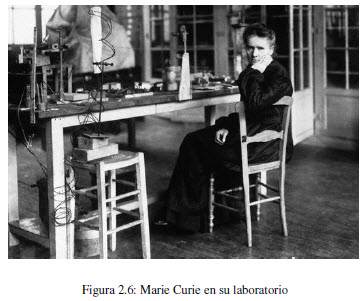 In 1895, the German physicist Wilhelm Röntgen observed that by shining cathode rays on metal plates, they emitted high-energy rays, which due to their unknown nature he called X-rays.
In 1895, the German physicist Wilhelm Röntgen observed that by shining cathode rays on metal plates, they emitted high-energy rays, which due to their unknown nature he called X-rays.
X-rays were not deflected by electric or magnetic fields, which implies that they are not made up of charged particles. They were also capable of passing through matter, obscuring covered photographic plates.
In 1896, Antoine Becquerel, professor of physics in Paris, observed how certain uranium minerals naturally gave off radiation similar to X-rays. Marie Curie proposed the name radioactivity to describe the phenomenon, calling radioactive materials substances that present this property.
The radiation coming from natural disintegration is made up of three types of rays. Alpha rays consist of positively charged particles, when subjected to electric fields they are deflected towards the negative electrode.
Beta rays are negative particles (electrons).
Gamma rays are high-energy electromagnetic radiation, similar to X-rays. Their trajectory is not altered by being subjected to electric or magnetic fields.



